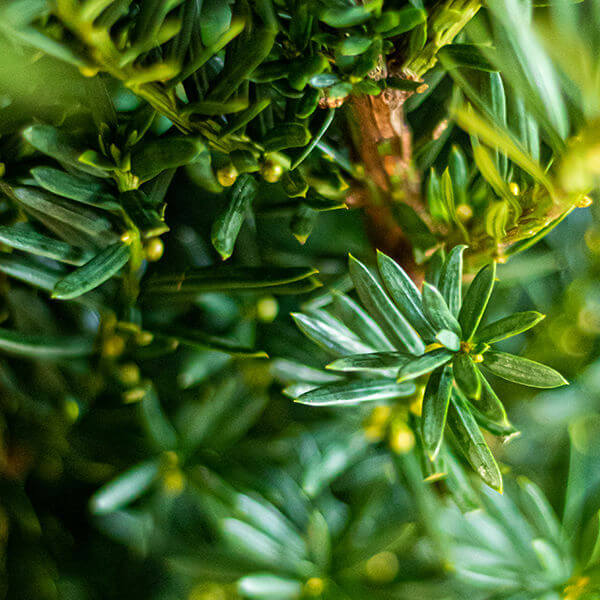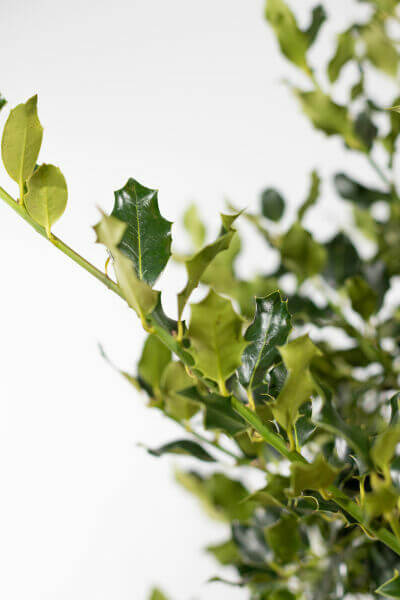Best Hedging Plants For Garden Privacy
Best Hedging Plants For Garden Privacy
Blog Article
Best Hedging Plants For Boundary Marking
Enhance your garden's attraction with rich hedge varieties such as Yew (Taxus), Thuja, Laurel, Photinia, and Bamboo, commemorated for their structural stability and environmental benefits.
Yew and Thuja supply evergreen protection and winter resilience, while Laurel provides rapid growth and broad, aromatic leaves.
Photinia adds seasonal beauty with its vibrant red foliage, and Bamboo lends a low-maintenance, tranquil ambiance.
These hedges improve air quality, lower noise, and produce tranquil, personal spaces.
Correct planting, spacing, and maintenance guarantee energetic growth and environmental consistency.
Explore how these rich ranges can raise your garden's beauty and well-being.
Secret Takeaways
Change Your Garden With Lush Hedge Ranges
- Select Yew for its thick, evergreen growth and unrivaled durability.
- Opt for Laurel for its fast growth and broad leaves, guaranteeing fast personal privacy.
- Pick Photinia for its vibrant seasonal foliage, which turns a striking dark red.
- Utilize Bamboo for a low-maintenance, winter-hardy hedge with aesthetic appeal.
- Space plants 2-3 per meter and prune routinely for ideal development and health.
Popular Hedge Plants
When changing a garden with lavish hedge ranges, it's vital to consider popular hedge plants such as Yew, Thuja, Laurel, and Photinia due to their unique characteristics and benefits.
Yew (Taxus) is highly esteemed for its durability and thick, green development, making it a prime option for sustaining landscapes.
Thuja is kept in mind for its evergreen foliage and robust winter season durability.
Photinia adds seasonal vibrancy with red leaves that darken gradually, developing vibrant visual appeal.
Laurel uses quick growth and fragrant, broad leaves, suitable for quick personal privacy.
In Addition, Bamboo is an excellent option for atmosphere, providing a low-maintenance, winter-hardy choice that improves the garden's aesthetic with its elegant, swaying walking canes.
These choices accommodate a variety of horticultural requirements and preferences.
Benefits of Garden Hedges
Garden hedges use a plethora of advantages, making them a valuable addition to any landscape. These natural barriers are cost-effective to carry out and offer significant wind security, enhancing air blood circulation and adding to noise decrease. The dense foliage of hedges like Thuja and Beech makes sure privacy by blocking visibility, developing a secluded and tranquil environment.
Hedges also play a vital role in microclimate guideline, providing a steady environment that fosters plant development and lessens temperature variations. Their elaborate leaf structures filter toxins, improving air quality and adding to a much healthier garden environment.
Moreover, hedges master sound reduction, taking in and deflecting acoustic waves to lower ambient sound levels. This dual functionality of supplying both acoustic and visual privacy boosts the overall serenity and visual appeal of any garden.
Planting and Upkeep Tips
For a successful hedge, meticulous preparation of the planting area is vital. Make sure the soil has proper pH and drainage to support strong root development.
Area the plants properly for the picked types. Water the hedge regularly throughout its preliminary development phase, changing as needed with seasonal changes.
Implement a methodical bug control and illness avoidance method, utilizing natural or chemical treatments when essential. Frequently check for aphids, mites, and fungal infections.
Apply mulch to keep moisture and suppress weeds. Seasonal pruning promotes dense development and air blood circulation, essential for plant health.
Following these standards will assist you cultivate a lively, well-maintained hedge that enhances the beauty of your garden.
Spacing and Cutting Standards
Spacing and Trimming Guidelines
Proper spacing and cutting are important for cultivating healthy, aesthetically appealing hedges. Adequate spacing ensures each plant gets adequate nutrients, light, and airflow.
Follow these standards for optimum hedge maintenance:
- Spacing: Position hedge plants 2-3 plants per meter to encourage robust development.
- Pruning Strategies: Regular pruning is essential for keeping preferred hedge height and shape. Trim brand-new growth in summer season and cut down older wood during winter season.
- Seasonal Care: Change trimming schedules and approaches according to seasonal requirements to guarantee plant health.
- Hedge Height: Routinely display and cut to keep the preferred hedge height and achieve uniform aesthetics.
Complying with these actions will ensure your hedge prospers, enhancing both the appeal and performance of your garden.
Picking the Right Hedge
Selecting the Right Hedge
Picking the suitable hedge involves assessing aspects such as mature height, foliage density, and ecological strength. Successful hedge plant choice needs understanding each species' development attributes and site-specific adaptability.
For instance, Yew (Taxus) uses excellent longevity and thick development, while Thuja is significant for its winter durability. In addition, thinking about maintenance requirements is crucial; fast-growing species like Laurel or Privet demand regular cutting, whereas low-maintenance alternatives like Bamboo or Ivy might be more effective for those looking for very little maintenance.
Ecological factors such as soil type, light availability, and moisture conditions ought to also assist the choice procedure. This mindful technique makes sure the picked hedges will grow, supplying both visual and practical advantages to the garden landscape.
Shipment and Planting Advice
To guarantee your hedge plants grow, they need to be provided by specialized couriers and planted immediately upon arrival.
Follow these necessary steps for effective planting:
- Soil Preparation: Enhance the soil with organic matter to enhance drain and nutrient content.
- Planting Depth: Create a trench twice the width and equivalent to the depth of the root ball.
- Watering Techniques: Water completely after planting, keeping the soil regularly moist however not filled.
- Mulching: Apply a layer of mulch to retain moisture and reduce weeds.
Client Support and Service
Offered the important role of prompt support in horticultural pursuits, our customer assistance team is readily available 6 days a week through telephone, email, and social networks to provide skilled recommendations and swiftly resolve any issues. Their devotion to fast response times makes sure customer fulfillment by dealing with questions associated with plant health, optimal planting techniques, and upkeep schedules.

-----------------
6 days a week
Within 24 hours
This comprehensive support group, strengthened by a stellar 9.3/ 10 consumer score, highlights our commitment to boosting the gardening experience for each client.
Often Asked Concerns
For How Long Does It Take for Hedge Plants to Develop?
Hedge plants more info typically need one to three years to end up being completely developed, with the precise period varying by types and growing conditions.
Effective care throughout this critical period is important for robust development. Consistent watering, alert weed control, and appropriate fertilizer application are critical in promoting strong root advancement.
For example, fast-growing types like Laurel might establish more rapidly, while slower-growing ranges such as Yew might take longer. Persistent upkeep accelerates the establishment procedure, resulting in thick and healthy hedges.
What Are the Best Hedge Plants for Privacy?
The concern of the finest hedge plants for privacy involves assessing evergreen and deciduous alternatives.
Evergreen hedges like Thuja, Laurel, and Cypress supply year-round coverage, guaranteeing continuous personal privacy.
On the other hand, deciduous hedges such as Beech provide seasonal personal privacy, shedding leaves in colder months.
Key maintenance pointers for privacy hedges include regular trimming, fertilizing in spring, and appropriate spacing-- usually 2 to 3 plants per meter.
In addition, constant watering and thorough weed elimination are vital for promoting healthy, thick growth.
Can Hedge Plants Draw In Wildlife to My Garden?
Yes, hedge plants can draw in wildlife to your garden by offering vital benefits like shelter, food, and nesting sites, thus improving local biodiversity. For instance, yew, holly, and laurel are excellent for attracting birds, while ivy supports a variety of pests.
Nevertheless, it is essential to note that there are some drawbacks, such as increased upkeep to handle insects and regular maintenance. Thoroughly choosing and maintaining hedge ranges can assist balance these advantages and disadvantages, ultimately cultivating a dynamic and sustainable ecosystem in your garden.
Exist Any Flowering Hedge Plants Available?
Yes, there are flowering hedge plants readily available that can boost the appeal of your garden.
For example, Elaeagnus, also understood as Olive Willow, produces aromatic white flowers in the fall, adding a touch of sophistication.
Photinia, another popular choice, showcases lively red leaves that develop into an abundant green, producing a vibrant visual result throughout the seasons.
To guarantee these plants thrive, it's necessary to practice proper pruning strategies and seasonal maintenance, such as cutting new growth in the summer and cutting down in the winter season.
These steps will assist maintain the health and aesthetic appeal of your blooming hedges.
How Do I Prevent Insects in My Hedge Plants?
To prevent insects in hedge plants, use natural pest control techniques and keep proper hedge care. Introduce helpful insects like ladybugs, which take advantage of damaging bugs, to create a well balanced environment.
Routinely inspect your hedges for signs of invasion and promptly remove any afflicted parts to avoid the spread. Make sure the health of your hedges by applying balanced fertilizers and providing sufficient water.
Use mulching to maintain soil wetness and correct spacing to lower plant tension and promote robust development. These practices jointly assist in minimizing pest issues and maintaining a healthy hedge.
Conclusion
In essence, choosing the best hedge varieties such as Yew, Thuja, and Laurel can transform any garden into a peaceful haven. These plants provide year-round greenery, enhance visual appeal, and deal useful advantages like noise reduction and wind protection.
Proper planting strategies, precise spacing, constant watering, and seasonal trimming are important for optimal development.
Dependable delivery services and skilled client support ensure a smooth experience from purchase to planting, making it simpler than ever to elevate your outside space.
Garden hedges offer a plethora of advantages, making them a valuable addition to any landscape. These natural barriers are cost-effective to carry out and offer significant wind defense, improving air circulation and contributing to sound reduction. The thick foliage of hedges like Thuja and Beech guarantees personal privacy by blocking visibility, producing a peaceful and secluded environment.

Pruning Techniques: Regular pruning is important for preserving desired hedge height and shape. Trim new development in summer season and cut back older wood throughout winter.
Report this page